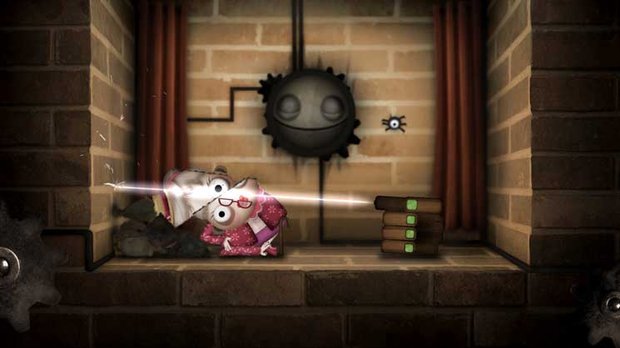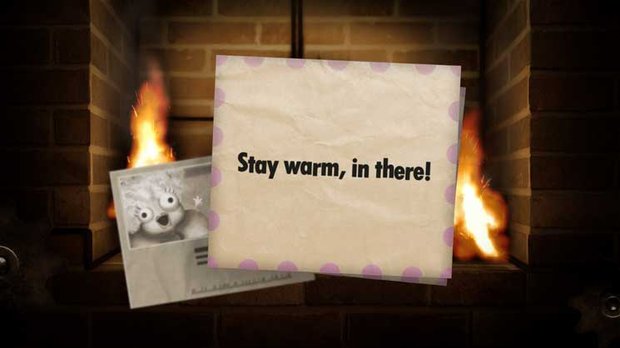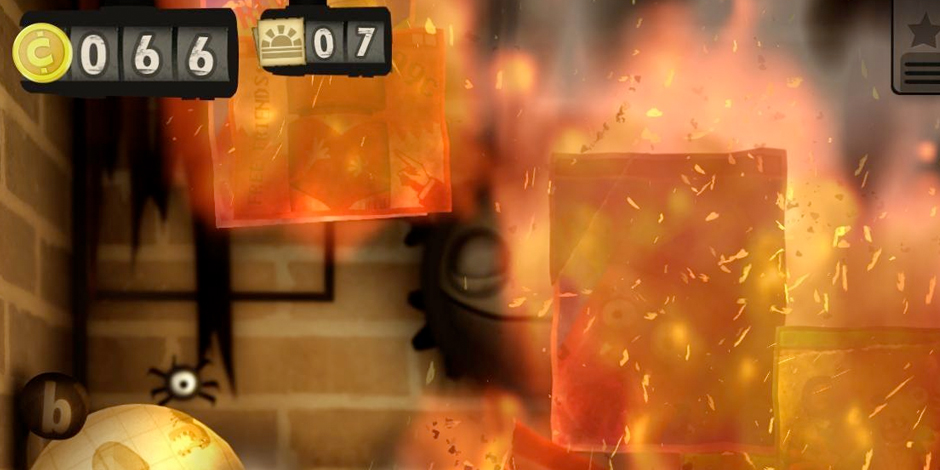GamesRadar+ Verdict
Pros
- +
Burning stuff
- +
Collecting the money from burning stuff to buy new stuff
- +
Burning the new stuff
Cons
- -
Relatively one-note gameplay
- -
Sometimes nonsensical puzzle solutions
- -
A little short and a little overpriced
Why you can trust GamesRadar+
So here's the thing: Little Inferno (developed by some of the folks that made World of Goo and Henry Hatsworth in the Puzzling Adventure) is an inventive, surprising puzzle game that we highly recommend you play. That said, knowledge of what makes it special takes away from exactly that--the more you know going in, the less surprising this surprising game is. In other words, if you're even remotely interested in playing it, you should just go do that; we promise it's worthwhile, even if it is a little pricey.
If you're still not sold, and don't mind having things spoiled, then feel free to read on, and find out what makes Little Inferno one of the most imaginative games of the year.

As the recipient of a new "Little Inferno Entertainment Fireplace," you're tasked with burning stuff. Burning stuff produces coins, which you can use to buy more stuff that you can burn, to get more coins to buy more stuff to burn to get coins to buy more stuff to burn. You can unlock new catalogs full of stuff by burning specific stuff together, adding some puzzle vertebra onto the pyromaniac backbone. But, by and large, you'll spend a majority of the two-to-three-hour-long game tossing stuff into a fireplace and watching the flames slowly engulf it. Wooden blocks? Sure, toss ‘em in. Corn? Why not--it’ll make popcorn. Dolls, animals, black holes, planets? Whatever, man. Burn it, loot it, and then burn it some more. That’s what the Little Inferno Entertainment Fireplace wants you to do, and since you can’t turn away from it, you might as well burn every non-flame-retardant thing you can.
It's entrancing in a weird, destructive way. If that was all there was to Little Inferno, it would still be worth experiencing, if not to just to allow your eyes to fill with the sweet glow of inferno. But beyond the flames and embers, and far from the smokestacks and chimneys, there's something hidden beneath the thick layer of soot covering Little Inferno. Though it starts plot-less and relatively innocent, an incredibly creepy story slowly unravels as you toss more objects into the flames, giving you insight into the frozen dystopia right outside the door.
At first, you might skim and ignore the random letters you'll receive from strangers, thinking them to be flavor text for kindling. But by the end, you'll be pouring over each note, desperately scraping for any details on the world you can't see. What is happening in the world? Why can't you just walk outside? Why can't you even turn around? It's all slowly explained, making for a weird, disturbing story that comes out of absolutely nowhere, and is utterly entrancing.

The puzzle elements, albeit light and nonsensical, are fun and imaginative. Burning different items together in hopes of unlocking new combos is, in a weird, sadistic way, somewhat soothing, as is watching the well-modeled objects slowly turn to pieces as the fire immolates. Though it’s a little too short and a little too expensive, the mostly unseen world outside the Little Inferno Entertainment Fireplace is charming and impressive, and absolutely worth experiencing.
More info
| Genre | Puzzle |
| Description | Little Inferno is a surreal puzzle platformer that's story takes place almost entirely in front of a fireplace. Players take the role of children who throw their toys into the fireplace which generates puzzles. |
| Platform | "Wii U","PC" |
| US censor rating | "Teen","" |
| UK censor rating | "","" |
| Release date | 1 January 1970 (US), 1 January 1970 (UK) |
Hollander Cooper was the Lead Features Editor of GamesRadar+ between 2011 and 2014. After that lengthy stint managing GR's editorial calendar he moved behind the curtain and into the video game industry itself, working as social media manager for EA and as a communications lead at Riot Games. Hollander is currently stationed at Apple as an organic social lead for the App Store and Apple Arcade.




